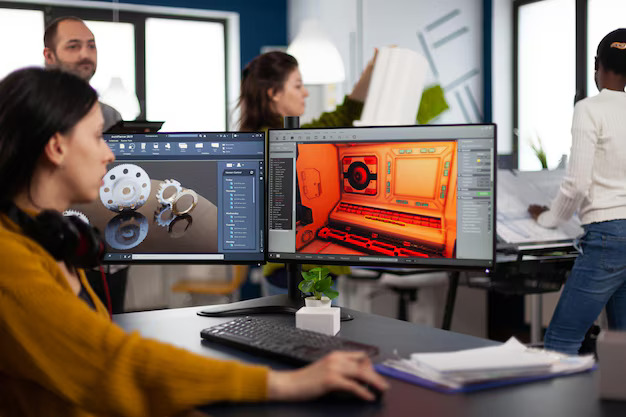
5 Trends in the CAD Industry for 2025 and Beyond
The CAD (Computer-Aided Design) industry is continuously evolving, driven by technological innovations and the increasing complexity of design requirements across industries. From architecture to manufacturing, CAD design software is at the forefront of this evolution, enabling professionals to push the boundaries of what’s possible.
As we look toward 2025 and beyond, new trends are reshaping how designers, engineers, and architects utilize CAD tools. Here are five trends that are set to define the future of the CAD industry and how companies like Alcads are keeping pace with these advancements.
-
Cloud-Based CAD Design Software
Benefits of Cloud-Based CAD
- Anywhere Access: Designers can work from any location with an internet connection, allowing for greater flexibility in a hybrid work environment.
- Enhanced Collaboration: Teams can collaborate in real-time, making edits and sharing updates seamlessly.
- Cost-Effectiveness: Cloud solutions eliminate the need for heavy hardware investments, reducing upfront costs.
-
AI Integration in CAD Systems
Key Applications of AI in CAD
- Generative Design: AI can generate multiple design iterations based on specified parameters, enabling users to explore creative options faster.
- Automation: Repetitive tasks, such as creating standard components or making minor adjustments, can be automated, saving time and effort.
- Error Detection: AI algorithms can identify potential design flaws or inconsistencies early in the process, reducing costly errors later.
-
Rise of 3D Printing and Additive Manufacturing
Impacts on CAD Design Software
- Seamless 3D Model Integration: CAD systems are now tailored to create detailed, print-ready designs compatible with 3D printers.
- Material Optimization: CAD tools incorporate features that optimize designs for specific materials, ensuring structural integrity and cost efficiency.
- Custom Manufacturing: best 3D CAD software enables personalized designs for industries like healthcare, where custom prosthetics and implants are becoming more common.
-
Advancements in 2D CAD Software
Trends in 2D CAD Software
- Enhanced Compatibility with 3D Systems: 2D CAD tools are evolving to integrate seamlessly with 3D CAD software, creating a unified workflow.
- Improved User Interfaces: Developers are focusing on making 2D tools more intuitive and accessible, even for new users.
- Precision and Speed: Modern 2D CAD software prioritizes precision while incorporating features that accelerate drafting processes.
-
Sustainability and Eco-Friendly Design
How CAD Contributes to Sustainability
- Material Efficiency: CAD tools allow for precise material usage calculations, minimizing waste during production.
- Life Cycle Assessment: Advanced software can simulate the environmental impact of designs over their lifecycle, enabling more sustainable decision-making.
- Energy Optimization: CAD systems incorporate features that analyze energy efficiency in architectural designs or mechanical systems.
Future of CAD Design Software
As these trends shape the industry, the future of CAD looks increasingly dynamic and innovative. The integration of cutting-edge technologies like AI, cloud computing, and 3D printing is expanding the capabilities of CAD tools, making them more powerful and accessible than ever before. Both 2D and 3D systems are evolving to cater to the changing demands of industries ranging from architecture to manufacturing. We are at the forefront of this transformation, ensuring that professionals have access to the latest tools and training to stay competitive.Overcoming Challenges in Adopting New CAD Trends
While the advancements in CAD technology are exciting, they also come with challenges, such as:- Learning Curve: Adapting to new features and tools can be daunting for users unfamiliar with the latest technology.
- Cost of Upgrading: Transitioning to advanced CAD systems or cloud solutions can require financial investment.
- Integration Issues: Ensuring Compatibility between different CAD systems and legacy tools can be complex.
Conclusion: Staying Ahead in the CAD Industry
The CAD industry is entering an exciting phase of growth and innovation, with trends like cloud computing, AI, and 3D printing leading the charge. Staying ahead requires more than just keeping up with technology—it demands a commitment to continuous learning and adaptability. If you’re looking to embrace these trends and maximize the potential of CAD design software, Alcads is here to guide you. With a focus on advanced tools and expert support, we are your trusted partner for staying competitive in the evolving CAD landscape. Explore the future of CAD with us today and elevate your design capabilities to the next level!